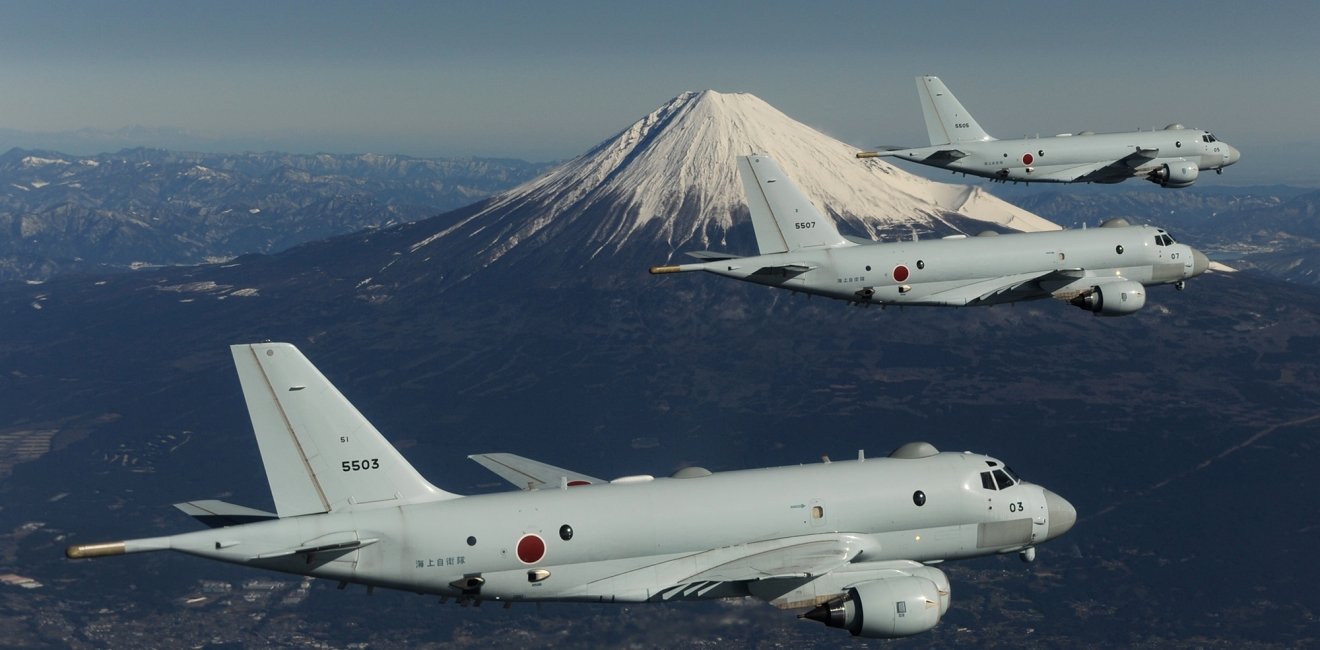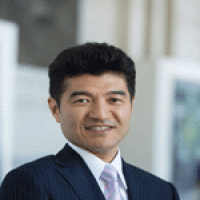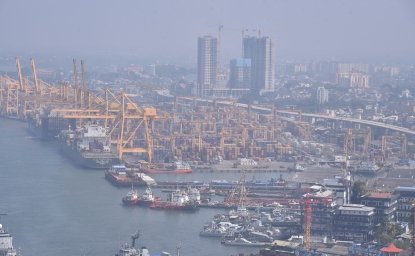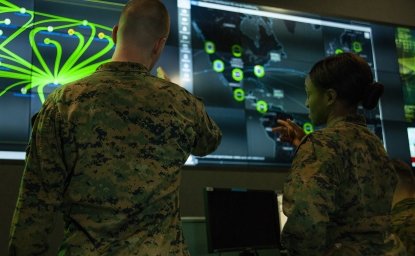Case 1
Myth: Japan’s Self-Defense Force is not a military force.
Reality: The Self-Defense Force is a full-fledged military force, one of the most capable in the world.
According to the Stockholm International Peace Research Institute, Japan was the world’s ninth largest spender on defense in 2018.[1] It has cutting-edge military equipment such as F-35 fighters, sea- and ground-based ballistic missile defense systems, and air-independent propulsion submarines.
However, the Japanese government maintains that the Self-Defense Force is not a military force. Why does the Japanese government keep lying about the nature of its armed forces? It is because Article 9 of the Japanese constitution stipulates that Japan shall not possess land, sea, and air forces.[2]
Moreover, in order to maintain this internal logic that the Self-Defense Force is somehow not a military force, the Japanese government continues to use idiosyncratic names for the Self-Defense Forceʼs organizations and equipment. For example, infantry units are called “ordinary units (普通科)”; artillery units are called “special units (特科)”; engineer units are called “facility units (施設科).” Similarly, a 3,000-ton Hatsuyuki-class combatant ship and a 20,000-ton Izumo-class combatant ship are lumped together as “escort ships (護衛艦)” in Japanese; in English, both of them are called “destroyers.”[3] However, professional observers understand the reality. The Military Balance, published by the International Institute for Strategic Studies based in London, categorizes JS Izumo as an aircraft carrier equipped with helicopters, or CVH.[4]
This deceptive naming is problematic in at least two ways. First, it undermines effective civilian control in Japan. In order for Japan to maintain effective civilian control, the Japanese people must know what kind of military capabilities their country has and does not have. However, few Japanese citizens are aware that “ordinary units” are in fact infantry units, and that their country actually possesses carriers.
Second, this use of misleading terminology undermines the transparency of Japanese defense policy. When one Chinese general noted that Japan had constructed a light aircraft carrier, but called it a “helicopter-equipped escort ship,” he accused Japan of engaging in a covert military buildup.[5] Unfortunately, there was some truth to what he said.
Despite the untruthful characterization of Japan’s armed forces and the use of the misleading names, Japan’s defense policy is quite realistic. Japan thinks it necessary to possess the minimum force necessary for self-defense, and the Japanese government acknowledges that while the Self-Defense Force is not a military force under Japanese law, it is regarded as a military force under international law.[6]
There are people who are making efforts to fill the gap between the myth and the reality. For example, Japanese Prime Minister Shinzo Abe has proposed to clarify Japan’s position by revising Article 9, and say that Japan possesses armed forces called the Self-Defense Forces for the purpose of self-defense.
However, it is not clear whether he will revise the misleading names that the Self-Defense Forces uses. Nor is it clear whether he can make the revision of the constitution happen during his tenure, which will end in September 2021.
Case 2
Myth: Japan is moving away from pacifism toward militarism.
Reality: Japan is moving away from isolationism toward internationalism.
People say that Japan is pacifist, but in fact Japan is isolationist, not pacifist. On the one hand, Japan has always rejected the use of its own forces in the settlement of international disputes. On the other hand, it has almost always supported the use of force by the United States. Pacifists do not support any use of force; Japan supports the use of force that it considers to be legitimate. For example, Japan considered the Gulf War of 1991 legitimate, and contributed $13 billion to the effort that the United States and other countries were making.
If Japan is not pacifist, it cannot move away from pacifism. So, what is Japan doing? Japan is actually moving away from isolationism toward internationalism, becoming more willing to contribute to international security.
The country remains divided on this issue, however. There are isolationists and internationalists still contending with each other today. Isolationists in Japan argue:
- People in the world love Japan for its pacifist image. If we became more proactive on security matters, that image would be tarnished. Moreover, there is a limit to what we can do militarily anyway.
- The U.S.-Japan alliance has worked well. Why don’t we keep relying on the United States? We don’t want to put our service men and women in harm’s way. Look at what happened to U.S. soldiers in Afghanistan and Iraq.
- If Japan becomes proactive on security matters, countries in the region such as Korea and China would become frightened. Worse yet, that would result in an arms race.
On the other hand, internationalists in Japan say:
- Some people in the United States (including President Donald Trump) think that Japan is a free rider, or at least cheap rider, on security matters. If we fail to share the burden of maintaining international peace, that view will stick.
- The U.S.-Japan alliance has been working well, but China is rising and becoming more assertive. The United States is less dominant in the Indo-Pacific region than before, and will not be able to maintain the balance of power in the region alone. Japan should do more to fill the gap.
- Many countries in the region trust Japan. For example, in “The State of Southeast Asia 2020,” a report published by the ASEAN Studies Centre in Singapore, it is stated that Japan was widely seen as the most trusted major power in the region (61.2 percent), and that the level of distrust of Japan was lowest among the major powers (21.3 percent).[7]
With isolationists and internationalists still contending, Japan is only slowly moving away from isolationism toward internationalism.
Half truth: While Japan is moving toward internationalism, the United States is moving toward isolationism.
This interesting contention occasionally made by some Japanese intellectuals is a variant of Japan’s pacifist myth, and something which is not wrong in itself. However, the fact is that Japan was very isolationist and the United States was very internationalist in the first place. As a result, even with Japan moving toward internationalism and the United States moving toward isolationism, the United States remains much more internationalist than Japan.
Keen observers must not buy into this trick that some Japanese intellectuals would play on them.
Case 3
Myth: The Japanese people don’t like nuclear weapons, and Japan does not accept nuclear weapons of any form.
Reality: The Japanese people don’t like nuclear weapons, and the Japanese government strives for nuclear disarmament. However, Japan is realistic and accepts U.S. extended nuclear deterrence as a critical element of its security policy.
Many of the Japanese citizens visit atomic bombing memorials in Hiroshima and Nagasaki, and understand the disastrous consequences of the use of nuclear weapons. I teach international security affairs at my school. In the session on nuclear issues and nuclear strategy, I always encourage students to read materials describing life in Hiroshima and Nagasaki after the bombing. For example, to make life easy for the students, I recommend some comic books and movies such as a comic book series, entitled, Barefoot Gen: A Cartoon Story of Hiroshima, and a film entitled, “Hiroshima,” produced in 1953.
The Japanese policymakers and people understand how devastating the consequences of nuclear use can be, so they think seriously about how to deter nuclear wars. As a result, Japan regards the extended nuclear deterrence that the United States has been providing as an indispensable element of its security policy.
For that reason, Japan takes the credibility of U.S. extended nuclear deterrence very seriously. When the United States and the Soviet Union negotiated the Strategic Arms Limitation Talks (SALT) in the 1970s, and when President Barak Obama started to talk about the “world without nuclear weapons,” Japanese policymakers’ response was mixed. While they supported the spirit of SALT and the “world without nuclear weapons,” they were concerned that if the United States went too far too soon, that might undermine the credibility of the extended nuclear deterrence that the United States provided to Japan.
According to the news report by Masakatsu Ota, a senior editorial writer for Kyodo news, in 2009 Japanese government officials conveyed three interesting messages to the U.S. congressional members working on nuclear policy review. They stated: (a) a capability to penetrate underground targets with low-yield nuclear devices would strengthen the credibility of an extended nuclear deterrence protecting Japan; (2) the nuclear-tipped submarine-launched Tomahawk cruise missile was an important element for maintaining the credibility of U.S. extended nuclear deterrence against China and North Korea; and (3) they wished to know more about U.S. nuclear forces and operation plans.[8]
More recently, when the U.S. government issued the new Nuclear Posture Review in 2018, which called for acquiring more robust and diversified nuclear capabilities, the Japanese government welcomed it. Then Foreign Minister Taro Kono stated:
“Japan highly appreciates that the U.S. Government clearly articulated its commitment to providing nuclear deterrence to its allies, amid the real threat posed by North Korea’s nuclear weapons and missiles.
While I am aware that various people have various opinions, the Japanese Government appreciates this NPR given our duty to protect the lives and peaceful livelihoods of the Japanese people.”[9]
Case 4
Myth: The U.S.-Japan alliance is there to defend Japan.
Reality: The U.S.-Japan alliance is there to defend not only Japan but also South Korea, and maintain peace and stability in other places in the globe.
In the context of its alliance with the United States, Japan plays two critical roles in the defense of South Korea. The first role is to provide main operating bases for U.S. forces fighting in defense of South Korea. The Self-Defense Forces provide air defense, missile defense, and ground protection for the U.S. bases in Japan. Japan has already invested approximately $20 billion on missile defense systems.
The second role is to provide military support for U.S. forces defending South Korea. The United States and Japan revised their bilateral defense guidelines in 1997, which articulated how the two countries’ armed forces would cooperate in various contingencies. Based on these guidelines, the Japanese Diet enacted the “act to maintain peace and security in situations in the areas surrounding Japan (SIASJ),” which enabled the Self-Defense Forces to provide intelligence, transport, maintenance, medical, security, and other support to the U.S. forces operating in the defense of South Korea.
Then, new security legislation enacted in 2015 made it possible for the Japanese defense forces to provide combat support to the U.S. forces fighting for South Korea.[10] It could now shoot down North Korea’s ballistic missiles aimed at Guam or Hawaii, conduct anti-submarine operations to protect U.S. naval forces, and sweep mines in the waters near North Korea in preparation for U.S. amphibious landing operations.[11]
Case 5
Myth: Japan is acquiring strike capabilities and is becoming more aggressive.
Reality: Japan has almost no meaningful strike capabilities, but it has started to acquire some limited strike capability to maintain the military balance in the region and as a hedge against future challenges.
In the past, it was quite natural that Japan did not possess strike capabilities for two reasons. First, the United States and Japan had been sharing roles and missions. While the United States took care of strike operations, Japan focused on defensive operations. Second, Japan is an island nation, far away from Russia, North Korea, and China, and it was relatively easy to defend itself.
Why has Japan decided to acquire strike capabilities such as air-to-ground missiles, and to conduct research on high-speed glide vehicles, and component technologies for hypersonic cruise weapons? There were at least two reasons. First, Japan needed capabilities to prevent China from achieving fait accompli occupation of the Senkaku Islands. No Japanese forces are deployed in the Senkakus. If those islands are taken, Japan would have to take them back by conducting offensive operations against the occupation forces.
Second, Japan needed to hedge against the possibility that maneuverable warheads and high-speed glide vehicles would make ballistic missile defense systems obsolete. Japan has spent about $20 billion on ballistic missile defense systems as mentioned already. However, if North Korea and/or China develop maneuverable warheads and high-speed glide vehicles, defense-only defense might become no longer effective.
Case 6
Myth: If the Japanese constitution is revised, Japan will start playing a major international security role.
Reality: If the constitution is revised, Japan will probably start playing a slightly more important role in international security.
By now, the readers must know the reason of this contention. Isolationist sentiment remains strong. Even if the constitution is revised, that sentiment will stay.
Again, there is a gap between rhetoric and reality in Japan’s security policy, and I am sorry about that. One of my duties as a Japanese security specialist has been to analyze Japan’s security policy and make it easy to understand it. Hopefully, this essay helps you and other observers better understand Japan’s security policy.
Narushige Michishita is a global fellow of the Woodrow Wilson International Center for Scholars. He is also a vice president of the National Graduate Institute for Policy Studies in Tokyo, and a member of the National Security Secretariat Advisory Board of the Government of Japan. He has co-authored Lessons of the Cold War in the Pacific: US Maritime Strategy, Crisis Prevention, and Japan’s Role (Woodrow Wilson Center, 2016) with Peter M. Swartz and David F. Winkler.
The views expressed are the author's alone, and do not represent the views of the U.S. Government or the Wilson Center. Copyright 2020, Asia Program. All rights reserved.
[1] “The 40 countries with the highest military expenditure in 2018,” in Nan Tian, Aude Fleurant, Alexandra Kuimova, Pieter D. Wezeman, and Siemon T. Wezeman, “Trends in World Military Expenditure, 2018,” SIPRI Fact Sheet, April 2019, p. 2, https://www.sipri.org/sites/default/files/2019-04/fs_1904_milex_2018.pdf.
[2] Article 9 reads: “Aspiring sincerely to an international peace based on justice and order, the Japanese people forever renounce war as a sovereign right of the nation and the threat or use of force as means of settling international disputes.” “In order to accomplish the aim of the preceding paragraph, land, sea, and air forces, as well as other war potential, will never be maintained. The right of belligerency of the state will not be recognized.” “The Constitution of Japan,” Prime Minister’s Office of Japan, https://japan.kantei.go.jp/constitution_and_government_of_japan/constitution_e.html.
[3] For more detail, see Narushige Michishita, “Renaming the Self-Defense Force for Better Civilian Control and Transparency,” Gaikou, Vol. 16, December 2012, pp. 134-142, https://www.slideshare.net/tujicas/2012-renaming-the-sdf-for-better-civilian-control-and-transparency-full-michishita.
[4] International Institute for Strategic Studies, The Military Balance 2019 (Routledge, 2019), p. 277.
[5] Jiji, December 31, 2011.
[6] Statement made by Foreign Minister Taro Nakayama in the Diet session, October 18, 1990, in Bouei Handobukku 2019 (Defense Handbook 2019) (Tokyo: Asagumo Shinbunsha, 2019), p. 682.
[7] Siew Mun Tang, et al, “The State of Southeast Asia 2020,” ISEAS-Yusof Ishak Institute, January 16, 2020, p. 53, https://www.iseas.edu.sg/images/pdf/TheStateofSEASurveyReport_2020.pdf.
[8] Masakatsu Ota, “Japan-US-Nuclear: Japan lobbied for robust nuclear umbrella before power shift,” Kyodo, November 23, 2009; and Tokyo Shinbun, November 24, 2009.
[9] Press Conference by Foreign Minister Taro Kono, February 6, 2018, https://www.mofa.go.jp/press/kaiken/kaiken4e_000459.html.
[10] Jonathan Soble, “Japan’s Parliament Approves Overseas Combat Role for Military,” New York Times, September 18, 2015, https://www.nytimes.com/2015/09/19/world/asia/japan-parliament-passes-legislation-combat-role-for-military.html.
[11] “Japan to allow military role overseas in historic move,” BBC, September 18, 2015, http://www.bbc.com/news/world-asia-34287362







